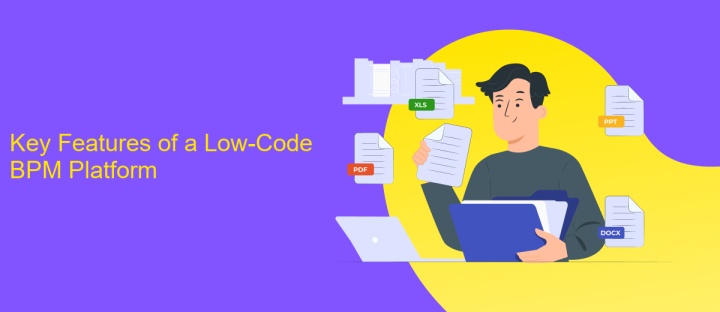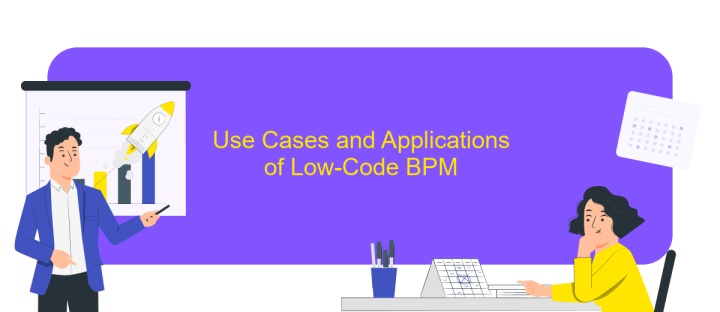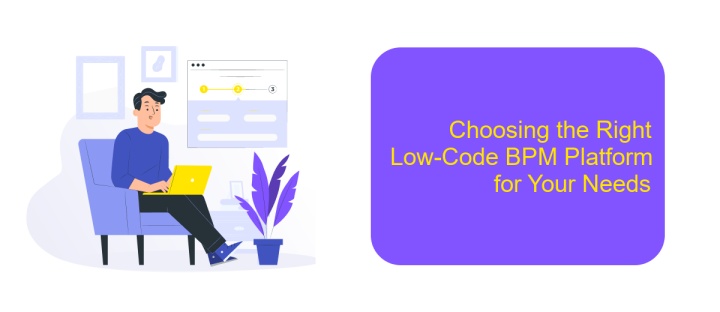Low-Code BPM
Low-Code Business Process Management (BPM) is revolutionizing the way organizations design and automate their workflows. By enabling users to create applications with minimal coding, low-code platforms empower businesses to streamline processes quickly and efficiently. This approach not only reduces development time and costs but also enhances agility and innovation, allowing companies to respond swiftly to market changes and improve operational efficiency.
Understanding Low-Code BPM and its Benefits
Low-Code BPM (Business Process Management) is a transformative approach that simplifies the development and management of business processes. By using intuitive visual interfaces and pre-built components, it enables users with minimal coding knowledge to design and automate workflows efficiently. This democratization of process management empowers businesses to respond swiftly to changing market demands and enhances collaboration between IT and business teams.
- Accelerated process development: Low-code platforms reduce the time and effort needed to create and deploy business processes.
- Enhanced agility: Businesses can quickly adapt to changes, ensuring competitive advantage and operational efficiency.
- Cost-effectiveness: Minimizing the need for extensive coding reduces development costs and reliance on specialized IT resources.
- Improved collaboration: Facilitates better alignment between technical and non-technical teams, fostering innovation.
- Scalability: Easily scalable to accommodate growing business needs without major overhauls.
In conclusion, Low-Code BPM offers a strategic advantage by streamlining process management and fostering innovation. Its ability to bridge the gap between business and IT ensures that organizations can rapidly adapt to evolving market conditions, ultimately driving growth and efficiency. As businesses continue to seek agile and cost-effective solutions, Low-Code BPM stands out as a pivotal tool in modern process management.
Key Features of a Low-Code BPM Platform

Low-Code BPM platforms offer a range of key features designed to streamline business processes with minimal coding requirements. One of the primary features is the intuitive visual interface, which allows users to design workflows through drag-and-drop functionality. This user-friendly approach empowers non-technical staff to create and modify processes efficiently. Additionally, these platforms often include pre-built templates and components that expedite the development of business processes, reducing the time and effort required to implement solutions.
Another essential feature is seamless integration capabilities with existing systems and third-party applications. For instance, services like ApiX-Drive facilitate the effortless connection of various applications, enabling automated data transfer and synchronization. This integration capability ensures that all business processes remain interconnected and up-to-date. Furthermore, low-code BPM platforms typically offer robust scalability and flexibility, allowing organizations to adapt to changing business needs without extensive re-coding. These features collectively enhance operational efficiency and drive digital transformation within organizations.
Use Cases and Applications of Low-Code BPM

Low-Code BPM platforms are revolutionizing how businesses approach process management by enabling rapid application development with minimal coding. These platforms are particularly beneficial for organizations seeking agility and efficiency in their operations. They allow non-technical users to design and automate workflows, reducing dependency on IT departments and accelerating time-to-market for new initiatives.
- Process Automation: Streamline repetitive tasks and reduce manual errors by automating complex workflows.
- Customer Service: Enhance customer interactions by deploying applications that ensure quick and accurate responses.
- Compliance Management: Simplify adherence to regulations by automating compliance checks and documentation processes.
- Supply Chain Optimization: Improve supply chain efficiency by automating order processing and inventory management.
- HR Management: Facilitate employee onboarding and performance evaluations through automated HR workflows.
In conclusion, Low-Code BPM platforms offer versatile applications across various industries, empowering businesses to innovate without the traditional constraints of software development. By leveraging these tools, organizations can focus on strategic growth while ensuring operational excellence through improved process management and automation capabilities.
Choosing the Right Low-Code BPM Platform for Your Needs

Choosing the right Low-Code BPM platform is crucial for optimizing your business processes efficiently. With a variety of options available, it’s essential to evaluate your specific needs and how different platforms align with them. Start by assessing the complexity of your workflows and the technical expertise of your team.
Consider the scalability and integration capabilities of the platform. A suitable Low-Code BPM should not only fit your current requirements but also grow with your business. Ensure the platform can seamlessly integrate with existing systems and support future technologies.
- Identify core features that are non-negotiable for your business operations.
- Evaluate the platform’s user interface and ease of use.
- Check for strong community support and regular updates.
- Consider the total cost of ownership, including hidden fees.
Ultimately, selecting the right platform involves balancing functionality, ease of use, and cost. By focusing on these aspects, you can choose a Low-Code BPM platform that enhances productivity, fosters innovation, and adapts to your evolving business landscape.
The Future of Low-Code BPM and its Impact on Businesses
The future of Low-Code BPM (Business Process Management) is poised to revolutionize the way businesses operate by simplifying complex processes and reducing the need for extensive coding expertise. As companies strive for agility and efficiency, Low-Code BPM platforms enable rapid development and deployment of business applications. This evolution allows organizations to adapt quickly to market changes, enhance customer experiences, and streamline operations. By empowering non-technical staff to create and modify workflows, businesses can foster innovation and reduce dependency on IT departments.
Moreover, the integration capabilities of Low-Code BPM solutions are expanding, allowing seamless connectivity between various systems and applications. Services like ApiX-Drive facilitate these integrations by providing user-friendly tools to connect disparate platforms without extensive coding. This not only enhances the functionality of BPM systems but also ensures data consistency and accuracy across the organization. As Low-Code BPM continues to evolve, its impact on businesses will be profound, driving digital transformation and enabling companies to remain competitive in an ever-changing market landscape.
FAQ
What is Low-Code BPM, and how does it differ from traditional BPM?
How can Low-Code BPM benefit my organization?
What types of processes are best suited for Low-Code BPM?
How secure is Low-Code BPM for handling sensitive business data?
Can Low-Code BPM integrate with existing systems and applications?
Time is the most valuable resource for business today. Almost half of it is wasted on routine tasks. Your employees are constantly forced to perform monotonous tasks that are difficult to classify as important and specialized. You can leave everything as it is by hiring additional employees, or you can automate most of the business processes using the ApiX-Drive online connector to get rid of unnecessary time and money expenses once and for all. The choice is yours!

